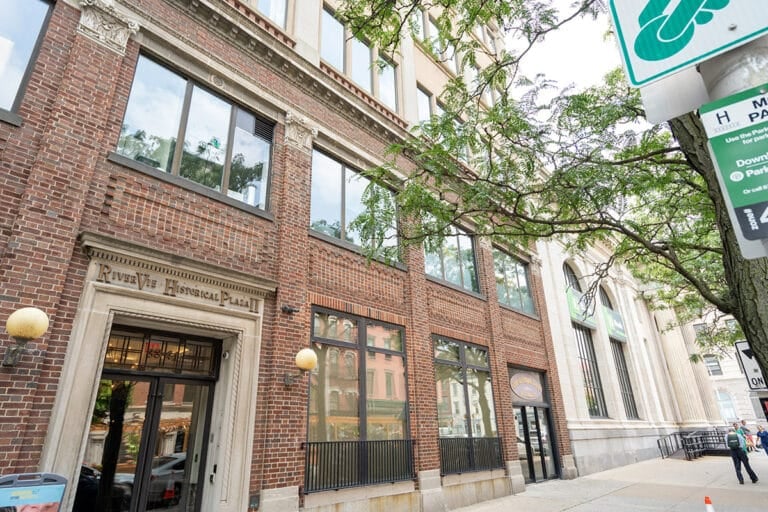Jersey City, NJ Drug Rehabs
Showing 1 to 15 of 786 results
-
CarePoint Health Christ Hospital
Levels of Care: Outpatient
Payment Options: Cash or self-payment, Medicaid, Medicare, Private health insurance
-
Hoboken University Medical Center
Levels of Care: Outpatient,
Payment Options: Cash or self-payment, Medicaid, Medicare, Private health insurance, Federal military insurance (e.g., TRICARE),
-
Ad
 1 miles away
1 miles away
Guardian Intensive Outpatient Treatment – Hoboken
Levels of Care: Inpatient, Outpatient, Detox, Aftercare, Residential, Full Spectrum of Care, Partial-Hospitalization, Intensive Outpatient, Telehealth, Medication-Assisted Treatment, Sober-Living Home, Intervention
Payment Options: Financing Available, Private Pay, AmeriHealth, Blue Cross Blue Shield, ComPsych, Anthem, Health Net, MultiPlan, Magellan Health, Optima Health, Insurance Accepted, Humana, Optum, Aetna, Cigna, United Healthcare
-
Khaleidoscope Healthcare Inc
Levels of Care: Outpatient,
Payment Options: Cash or self-payment, Medicaid, Medicare, Private health insurance, Federal military insurance (e.g., TRICARE),
-
Spectrum Health Care Inc
Levels of Care: Outpatient,
Payment Options: Cash or self-payment, Medicaid, Medicare, Private health insurance, Federal military insurance (e.g., TRICARE),
-
Exponents Inc
Levels of Care: Outpatient,
Payment Options: Cash or self-payment, Medicaid, Medicare, Private health insurance, Federal military insurance (e.g., TRICARE), State-financed health insurance plan other than Medicaid
-
Ad
 2 miles away
2 miles away
Recovery Centers of America
New York CityLevels of Care: Luxury Treatment, Inpatient, Outpatient, Detox, Residential, Full Spectrum of Care, Partial-Hospitalization, Intensive Outpatient, Medication-Assisted Treatment, Intervention
Payment Options: Private Pay, Blue Cross Blue Shield, Beacon, Anthem, Magellan Health, Insurance Accepted, Humana, Aetna, Cigna, United Healthcare
-
Hazelden
Levels of Care: Outpatient,
Payment Options: Cash or self-payment, Medicaid, Medicare, Private health insurance, Federal military insurance (e.g., TRICARE), State-financed health insurance plan other than Medicaid,
-
RevCore Recovery Ctr of Manhattan
Levels of Care: Outpatient,
Payment Options: Cash or self-payment, Medicaid, Medicare, Private health insurance, Federal military insurance (e.g., TRICARE), State-financed health insurance plan other than Medicaid,
-
Lafayette Medical Approach LLC
Levels of Care: Outpatient,
Payment Options: Cash or self-payment, Medicaid, Medicare, Private health insurance, Federal military insurance (e.g., TRICARE), State-financed health insurance plan other than Medicaid,
-
Ad
 22 miles away
22 miles away
Recovery Centers of America at Raritan Bay
Levels of Care: Inpatient, Outpatient, Detox, Residential, Full Spectrum of Care, Partial-Hospitalization, Intensive Outpatient, Telehealth, Medication-Assisted Treatment, Intervention
Payment Options: Financing Available, AmeriHealth, Blue Cross Blue Shield, ComPsych, Beacon, Anthem, First Health, Magellan Health, Insurance Accepted, Humana, Aetna, Cigna
-
Greenwich House Inc
Levels of Care: Outpatient,
Payment Options: Cash or self-payment, Medicaid, Medicare, Private health insurance, Federal military insurance (e.g., TRICARE), State-financed health insurance plan other than Medicaid,
-
Lower East Side Service Ctr Inc
Levels of Care: Outpatient,
Payment Options: Cash or self-payment, Medicaid, Medicare, Private health insurance, Federal military insurance (e.g., TRICARE), State-financed health insurance plan other than Medicaid,
-
Lower Eastside Service Center
Levels of Care: Outpatient,
Payment Options: Cash or self-payment, Medicaid, Medicare, Private health insurance, Federal military insurance (e.g., TRICARE), State-financed health insurance plan other than Medicaid,
-
Ad
 22 miles away
22 miles away
Guardian Recovery – Montville Adolescent Center
Levels of Care: Teen Treatment, Inpatient, Detox, Residential
Payment Options: Financing Available, AmeriHealth, Blue Cross Blue Shield, ComPsych, NYSHIP, Beacon, Health Net, MultiPlan, Magellan Health, Optima Health, Insurance Accepted, Humana, Optum, Aetna, Cigna, United Healthcare
-
LGBT Community Center
Levels of Care: Outpatient,
Payment Options: Cash or self-payment, Medicaid, Medicare, Private health insurance, Federal military insurance (e.g., TRICARE), State-financed health insurance plan other than Medicaid,
-
Project Renewal
Levels of Care: Outpatient,
Payment Options: Cash or self-payment, Medicaid, Medicare, Private health insurance, Federal military insurance (e.g., TRICARE), State-financed health insurance plan other than Medicaid,
-
Hamilton Madison House
Levels of Care: Outpatient,
Payment Options: Cash or self-payment, Medicaid, Medicare, Private health insurance, Federal military insurance (e.g., TRICARE), State-financed health insurance plan other than Medicaid,
-
Gouverneur Clinic
Levels of Care: Outpatient,
Payment Options: Cash or self-payment, Medicaid, Medicare, Private health insurance, Federal military insurance (e.g., TRICARE), State-financed health insurance plan other than Medicaid,
Loading results...
No listings found.
Showing 1 to 15 of 786 results
Government Programs
Find local government programs that promote sober living and will help you find peace in your day to day life.
Hudson County Area
P.O.Box 13026Jersey City, N.J. 07303
Greater New York Regional Service Office
154 Christopher Street Suite 1AManhattan, New York 10014 212-929-6262
Greater Newark Area.
P.O.Box 7402Newark, NJ 07107
Inner City Area
P.O.Box 3855Newark, N.J. 07103
N.N.J.R.S.C.
P.O.Box 8224Newark, NJ 07103
Bergen Area
P.O.Box 738Little Ferry, NJ 07634
College Programs
Counseling and Psychological Services
Saint Peter's University
2641 John F. Kennedy BlvdJersey City, NJ 07306 Visit Website ⟶ (201) 761-6420
Counseling Center
Pace University-New York
1 Pace PlazaNew York, NY 10038 Visit Website ⟶ 914-773-3710
Counseling and Psychological Services (CAPS)
Stevens Institute of Technology
1 Castle Point TerraceHoboken, NJ 07030 Visit Website ⟶ 201.216.5177
Alcohol and Substance Abuse Program
New Jersey City University
2039 Kennedy BlvdJersey City, NJ 07305 Visit Website ⟶ 201-200-3165
Substance, Assessment, Feedback, and Evaluation (SAFE)
New York University
726 BroadwayNew York, NY 10003 Visit Website ⟶ 212-443-9999
The New School Counseling Services
The New School
66 West 12th StreetNew York, NY 10011 Visit Website ⟶ 212-229-1671
Counselling and Mental Health Services
Cooper Union for the Advancement of Science and Art
30 Cooper SqNew York, NY 10003 Visit Website ⟶ 212.353.4006
Student Services
SAE Institute of Technology-Nashville
218 West 18th Street4th Floor, New York, NY 10011 Visit Website ⟶ 800-872-1504
AA and NA Meetings in Jersey City
Brooklyn Intergroup of AA
PO Box 21022, Brooklyn, NY 11202Fellowship
Alcoholics Anonymous (AA)
Inetr-Group Association of AA
307 Seventh Avenue, Suite 201 New York, NY 10001Fellowship
Alcoholics Anonymous (AA)
Hours
Sunday 9:00 am - 10:00 am
Recovery in the Afternoon
360 Schermerhorn St, NY 11217Fellowship
Narcotics Anonymous (NA)
Hours
Monday 12:00 pm - 1:30 pm
Oficina Intergrupal Hispana New Jersey
256 Mulberry Street - Newark, New Jersey 07102Fellowship
Alcoholics Anonymous (AA)
Midday Miracles
424 E 19th St, New York, NY 11226Fellowship
Narcotics Anonymous (NA)
Hours
Monday 10:00 am - 11:30 am
GET REAL ON THE TERRACE
3058 Richmond TerraceFellowship
Narcotics Anonymous (NA)
Hours
Wednesday 7:30 am - 9:00 pm
7AM Wake-up
Ready Willing & Able, 2960 8th AveFellowship
Narcotics Anonymous (NA)
Queens Intergroup
QIAA, PO Box 754088, Forest Hills Station, N.Y. 11375-9088Fellowship
Alcoholics Anonymous (AA)
Hours
Monday 3:00 pm - 5:00 pm
Born to Win
215 Lafayette Avenue, Passaic, NJ 07055Fellowship
Narcotics Anonymous (NA)
Hours
Tuesday 8:00 pm - 9:30 pm
Feature your center
Ready to connect with treatment seekers across the country? Enter your information to learn about our advertising options and get in contact with our development team.

